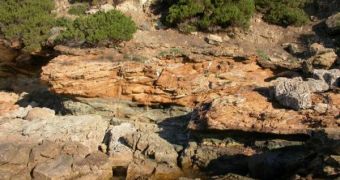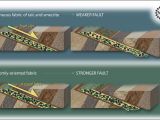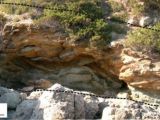For a long time, geologists and seismologists have noticed that some fault lines, which are generally considered to be very stable and strong, tend to “slip up” at some points and become mobile. The scientific community has had no explanation for this phenomenon, so researchers have set out to discover why this happens. The international team of experts has recently concluded its thorough analysis, and the results of its work appear in the latest issue of the respected scientific journal Nature.
“Low-angle normal faults – faults that dip less than 45 degrees – are a problem. Standard analysis shows that these faults should not slip because it is easier to form a new fault than to slip on this orientation,” Pennsylvania State University (Penn State) Professor of Geosciences Chris Marone says. But practical observations revealed that the faults indeed slipped, which prompted the scientists to wonder if their understanding of how materials flowed in the structure was correct.
“The standard way to test the friction of the rocks in a fault is to take some of the rock and grind it up into a powder. The powder is then tested in an apparatus that applies shear forces to the materials measuring the amount of force it would take to move sides of the fault,” the expert says. This is the general method of testing the material inside fault lines that is employed at this point. However, the new group wanted to test the rocks in situations that more closely resembled those inside the actual fault lines.
The Isle of Elba provided the ideal study conditions, group member Cristiano Collettini says. He is a Universita degli Studi di Perugia Geologia Strutturale e Geofisica researcher, who uncovered that the island held an exposed fault line on one of its beaches. From this place, rock samples could easily be gathered from their natural environment and then analyzed. “Cristiano was insistent on checking the shear forces under conditions as close to the natural situation as possible. I thought what he wanted to do was impossible because the rocks cannot easily be cut into a shape that we can work with. We need a prismatic wafer of the material,” Marone adds.
“Normally the rock we use from fault zones comes from below the surface and we only get small amounts to work with. With the samples from Elba we could use a had rotary cutter and carve a wafer from the rock with the same orientation that would slip in the ground,” he says. The group learned that the main culprits behind the apparent weakness of the fault were small patches of talc and clay, which made the rocks slide on top of each other like a deck of cards pushed on a table.
“These low-angle normal faults do not look like they will do anything but creep along, but they could have earthquakes. There are places in central Italy, for example, where faults like this have had small earthquakes,” Marone adds.
“These findings may be widely applicable to other fault settings, depending on the local stresses creating the faults. In this way, this work is exciting and timely for those in the earthsciences community, as it may well prove advantageous to society, especially for those communities, on or near fault lines, most susceptible to earthquakes,” James Dunlap, the program manager of the National Science Foundation's (NSF) Geosciences Directorate, adds.

 14 DAY TRIAL //
14 DAY TRIAL // 

